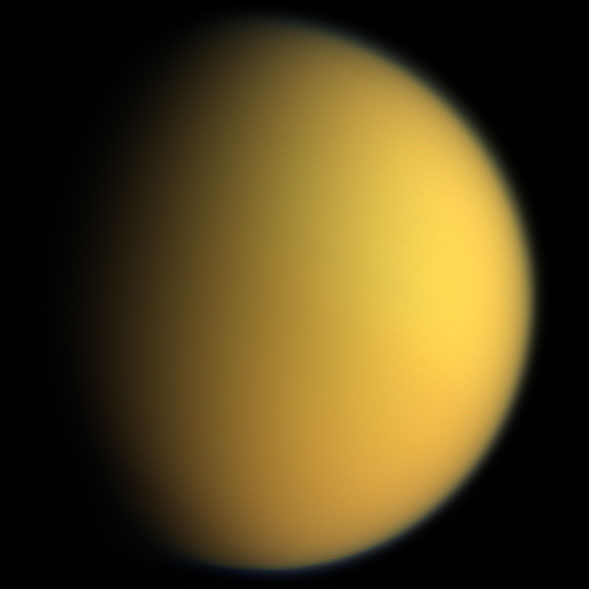NASA discovers key ingredient capable of supporting life on Saturn s moon Titan
A chemical in the Saturn's largest moon, Titan, has been discovered by NASA scientists. The chemical is capable of forming stable, flexible structures similar to cell membranes even under the harsh conditions.
Acrylonitrile, also known as vinyl cyanide, is a chemical found on Earth which is useful for manufacturing plastics.
Chemical fingerprint of acrylonitrile in Titan data collected by the Atacama Large Millimeter/ submillimeter Array (ALMA) in Chile was identified by the NASA researchers.
News Nation Bureau | Updated : 30 July 2017, 10:40:23 PM

NASA discovers key ingredient capable of supporting life on Saturn’s moon Titan
A chemical in the Saturn's largest moon, Titan, has been discovered by NASA scientists. The chemical is capable of forming stable, flexible structures similar to cell membranes even under the harsh conditions.
Acrylonitrile, also known as vinyl cyanide, is a chemical found on Earth which is useful for manufacturing plastics.
Chemical fingerprint of acrylonitrile in Titan data collected by the Atacama Large Millimeter/ submillimeter Array (ALMA) in Chile was identified by the NASA researchers.

Life on Saturn's moon Titan may be possible
Acrylonitrile molecules could come together as a sheet of material similar to a cell membrane.
"The ability to form a stable membrane to separate the internal environment from the external one is important because it provides a means to contain chemicals long enough to allow them to interact," said Michael Mumma, director of the Goddard Center for Astrobiology.
"If membrane-like structures could be formed by vinyl cyanide, it would be an important step on the pathway to life on Saturn's moon Titan," he added in a paper published in the journal Science Advances.

Saturn is the sixth planet from the Sun
Saturn is the sixth planet from the Sun and the second-largest in the Solar System, after Jupiter.

Large quantities of chemical were found by researchers on Titan
Large quantities of chemical were found by researchers on Titan, most likely in the stratosphere, which is the hazy part of the amosphere. the moon gets its brownish-orange colour from the stratosphere.

Titan surface temperatures average minus -179 degrees Celsius
"We found convincing evidence that acrylonitrile is present in Titan's atmosphere, and we think a significant supply of this raw material reaches the surface," said Maureen Palmer, researcher at NASA's Goddard Space Flight Center in Greenbelt, Maryland.
Earth's plants and animals' cells would not hold up well on Titan because of surface temperatures average minus -179 degrees Celsius and lakes filled with liquid methane.









